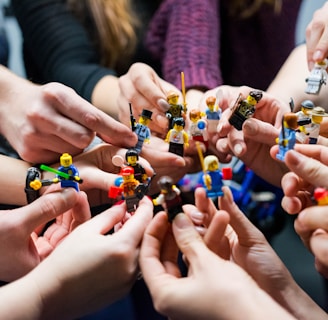Interdependence: The Power Of Close Ties
“The happiness of your life depends upon the quality of your thoughts.” ― Marcus Aurelius
MENTAL MODEL


When two or more individuals or entities rely on each other, the results of one affect the results of the other. This is an interdependent relationship. For example, take two countries. Country A is in a warmer climate that is ideal for growing sugarcane, and it supplies sugar to country B. Country B, in turn, has friendlier policies for food manufacturing units, and sells candy and similar produce to country A. Suppose one country stops its trade with the other. Both countries suffer economically, politically, and socially. One only has sugar, and no candy. The other has a manufacturing plant that turns sugar into candy, but no sugar.
Interdependence is present in nearly every facet of human life. From the familial connections you have with your loved ones to the interdependence of companies and species. They rely on one another to survive. A business needs employees to complete tasks. Employees require wages to meet their financial needs. Members of a family rely on each other for emotional and physical support, chores, and shared living expenses. Bees pollinate the environment, and the same environment houses their hives. Players on sports teams have unique sets of skills, and only when they work together can they collectively succeed. Users discussing and sharing information online prompts other users to do the same.
Why this principle is so widespread is because much of life is made up of complex systems. Each component contributes to and depends on the functioning of the whole. Think of it like a pipeline. This close connection can, however, create vulnerabilities as well. While interdependence entails collective strength, like a strategic alliance between companies, it also puts us at risk of the ripple effect. One component falters, and the whole system collapses. In a supply chain, the failure of one key supplier can disrupt production for countless companies that rely on them. A company overly reliant on a single partner will find it challenging to pivot if market conditions shift. For that reason you have to be very careful making changes to a system with interdependent variables.


Real-life examples of interdependence:
Business Ecosystems: a tech company forms partnerships with hardware manufacturers, software developers, and content creators to build their ecosystem (e.g. Apple’s or Microsoft’s). Each part enhances the value of the others. But failure in one segment (e.g. major software flaw) can impact the entire ecosystem.
Global Supply Chains: manufacturers rely on a network of suppliers for components. For example, automotive companies depend on a vast web of sources for everything from microchips to raw metals. While interdependence makes this insanely efficient system possible, disruptions like the shortage of a key material can have far-reaching consequences.
Healthcare: hospitals, research institutions, pharmaceutical companies, and insurance providers work together to deliver healthcare. Collaboration makes patient outcomes great. Excessive interdependence, however, can slow innovation if each shareholder is overly reliant on a set of partners (e.g. a pharmaceutical company for a particular hospital).
Educational Institutions: universities rely on partnerships with industry and government funding. These interdependencies make knowledge exchange possible. But over-reliance on one funding source limits academic freedom.
How you might use interdependence as a mental model: (1) find causal links — map out the relationships in your team, organization, project, or system to see how different components interact; (2) balance collaboration and independence — foster alliances but make sure each component has enough independence to stay afloat on its own; (3) plan for failure — develop a backup plan to mitigate failure in any single component (e.g. diversify suppliers, find multiple partners, get your materials from multiple sources); (4) make it crystal clear — ensure that every part of your system communicates openly about challenges, changes, and performance discrepancies so that you’re always on top of its overall health; (5) leverage synergy — find opportunities where collaborating can create value and double down (e.g. overlapping strengths, complementary skills).